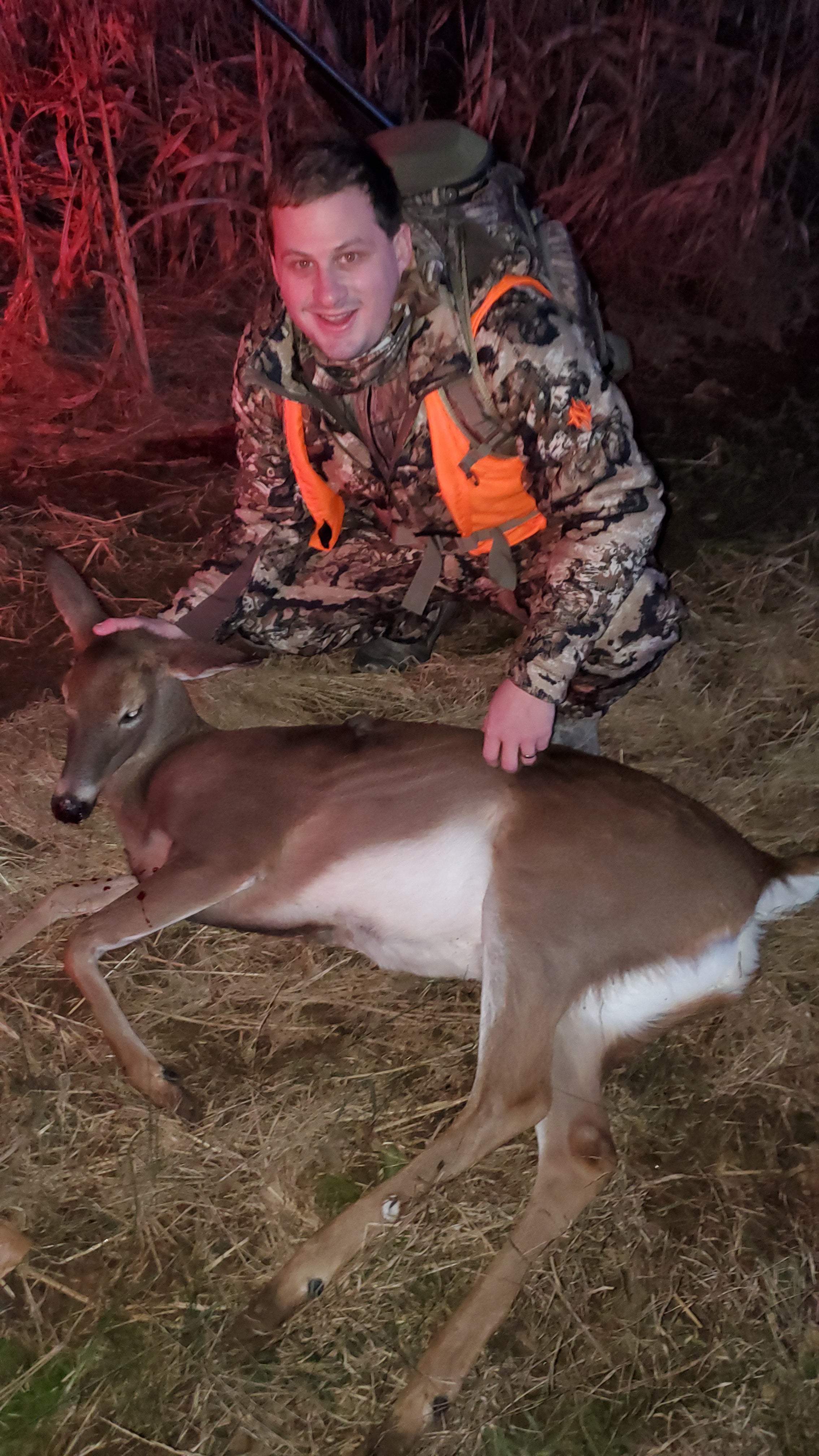Wanna step outside? Learning about chronic wasting disease
Published 12:00 am Thursday, October 5, 2023

- Deer hunters across northwest North Carolina (and in some Sandhills counties) will be required to have their white-tailed deer tested for chronic wasting disease. - Photo by Dan Kibler
|
Getting your Trinity Audio player ready...
|
With black powder and gun season for white-tailed deer just a few weeks away, the N.C. Wildlife Resources Commission is again trying to connect with hunters to let them know the requirements for hunting in areas where deer have been infected with chronic wasting disease.
The commission is going to hold a community question-and-answer forum from 7-9 p.m. on Tuesday, Oct. 10, in Yadkinville at the Yadkin County Cooperative Extension Center, 2051 Agricultural Way. Commission staff will talk about changes to special regulations in the area in northwest North Carolina known as CWD Surveillance Area 1, as well as in Surveillance Area 2, in the area around Cumberland County.
Surveillance Area 1 includes all or parts of the following counties: Alexander, Alleghany, Ashe, Davie, Forsyth, Guilford, Iredell, Rockingham, Stokes, Surry, Wilkes and Yadkin. Surveillance Area 2 includes Bladen, Cumberland, Harnett, Hoke, Robeson and Sampson counties.
In addition to attending in person, the public meeting can be watched on a live feed through Carolina Sportsman Magazine’s Facebook page.
CWD has been discovered in a handful of deer in the Yadkin, Surry, Stokes, Wilkes and Cumberland counties. It is a disease of the nervous system that is always fatal to whitetails and other members of the Cervid family, and it is extremely contagious.
The commission has adopted special regulations for CWD surveillance areas, including bans on transporting certain carcass parts out of certain areas and a ban on deer attractants and scents that have not come from herds that are confirmed as CWD-free, plus, all baiting of deer is now illegal between Jan. 2 and Aug. 31.
In addition, deer taken in CWD Surveillance Area 2 between Nov. 11 and Nov. 26 and deer taken in CWD Surveillance Area 1 between Nov. 8 and Dec. 3 must be submitted for testing within two weeks of harvest. Deer heads must be dropped off in certain drop-off freezers scattered across the areas, at participating taxidermists and/or deer processors, and certain commission-staffed check stations.
The commission will staff the following check stations on the following dates, beginning at 9 a.m.:
- John H. Pechmenn Center, Fayetteville, Nov. 13-26;
- Wild America Deer Processing & Taxidermy, Union Grove, Nov. 18, 25 and Dec. 2;
- East Stokes Community Center, Walnut Cove, Nov. 18, 20, 21, 22, 24, 25, 27, 29, 29, 30, Dec. 1, 2, 4, 5, 6;
- Wilkes Wildlife Depot, Traphill, Nov. 18, 20, 21, 22, 24, 25, 27, 28, 29, 30, Dec. 1, 2, 4, 5, 6.
For a list of participating taxidermists and processors and locations of drop-off freezers, go to https://www.ncwildlife.org/Hunting/Chronic-Wasting-Disease/Get-My-Deer-Tested.
Western bear, eastern deer gun seasons open soon
Early October finds hunters in the eastern and western thirds of North Carolina concentrating on two different species — but just as seriously.
Gun season for deer opens in the Northeastern and Southeastern hunt zones on Oct. 14, lasting until Jan. 1, 2024. And in the western third of the state, bear season opens Oct. 16, running through Nov. 28. In addition, bear season is open in the eastern Piedmont zone — Franklin, Harnett, Hoke, Johnston, Moore, Richmond, Scotland, Vance, Wake and Warren counties — Oct. 14, to run through Jan. 1, but outside of the mountain and coastal zones, barely 55 bears were killed in 2022.
North Carolina can boast of having some of the greatest black bear hunting in the nation, certainly, the biggest bears anywhere, with bruins in excess of 600 pounds being tagged every season. Last season, hunters took 4,056 bears statewide, with 2,532 coming from coastal counties and 1,468 bears taken in the mountains.
Hunters need an $11 bear stamp to take a bruin during the 2023 season.



